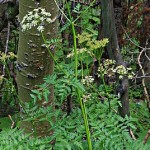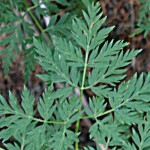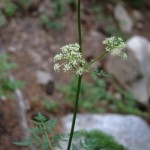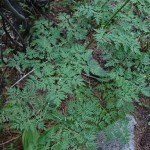Osha Root – Ligusticum porteri
|
Current Demand = Normal |
Parts Used: Root |
 |
 |
 |
 |
Family: Apiaceae
Common Names: Loveroot, Lovage, Porters Lovage, Chuchupate, wild parsley, Indian parsley, bear root…
Description:
Osha root is native to North America and the rocky Mountains, and is a perennial herb from the parsley family. It has fern like leaves that are two-toned, spotted green, especially when young, then turn gold with age. It often grows in thick, extensive patches. It can grow to about 4 feet. The seeds and flowers are at the top of the plant and spread out in the form of an umbrella. The herb has white flowers and the seeds have a sweet and strong celery-like fragrance.
Planting/Cultivation:
Growing region: Osha root can be found in the Southwestern North America along timberlines, meadows and ravines.
The seed is best sown as soon as it is ripe in the autumn and placed in a cold frame. Divide the seedlings into individual pots when they are large enough to handle. Transplant the plants into permanent homes in the summer. Keep them in a cold frame the first winter. The plants do best in a well drained soil in a sunny dry area.
Harvesting/Drying:
Parts Used: root
The root is “hairy,” brown on the outside and yellow on the inside, has a strong odor something like potent celery.
After harvest, remove all foreign matter (rocks, dirt and other roots) before cleaning and drying.
When possible dry indoors in a well ventilated barn loft or attic to protect against the elements. If natural heat is not available you may need to add heat and a fan for continuous airflow. The key to drying herbs, roots or bark is an even combination of heat and airflow.
Osha roots will completely dry (stem will snap not bend) in 3-7 days depending on the size of the root and the drying conditions. After dried, place in a cardboard box or paper bag and store in a dry place until ready to sell or use. Do not store the root in plastic as it will mold.
Attributes (Images)
By JerryFriedman (Own work) [CC BY-SA 3.0 or GFDL], via Wikimedia Commons
 Root Buyer
Root Buyer